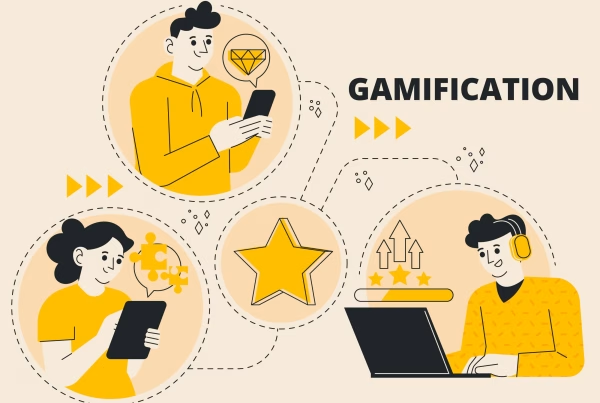Introduction to Player Reactivation
In iGaming, retention isn’t a nicety; it’s the engine of profitability. While acquisition grabs headlines and budgets, the reality is simple: a loyal player is worth far more than a newcomer. Multiple studies across digital sectors have shown it costs significantly more to acquire a new customer than to retain an existing one, and iGaming is no exception. With cost per lead frequently ranging from $200 to $500 in mature markets, squeezing more value from players you already have can transform margins, stabilize cash flow, and reduce your dependence on volatile traffic sources.
This article walks through a practical roadmap for reducing churn and reactivating dormant players using tactics you can start deploying immediately. You’ll learn why players leave, how to spot at-risk behavior before it becomes churn, and which reactivation strategies consistently deliver results; without wrecking your bonus budget or your brand reputation. Whether you operate a casino, a crypto casino, a sportsbook, or an affiliate-led hybrid, the playbook below will help you keep players happier for longer.
Why Retention Beats Acquisition
A returning player is both cheaper to engage and more likely to convert than a stranger discovering your brand for the first time. They’ve been through registration and KYC, they recognize your UX, and they have some degree of trust in your platform. That means fewer costly hurdles between a nudge and a deposit.
Industry benchmarks often cite that improving retention by as little as five percentage points can increase profitability dramatically. While the exact uplift depends on product mix, cost structure, and player behavior, the compounding effect of more sessions, more deposits, and stronger word of mouth is undeniable.
Let’s compare typical economics across player types based on realistic market assumptions. Your specific numbers may vary, but the direction of travel is consistent across verticals.
Table: The Economics of Retention and Reactivation
| Index | New Player | Reactivated Player | Loyal/Returning Player |
|---|---|---|---|
| Typical engagement cost (CPL/CPA/CRM touchpoint) | $250–$500 (traffic + CPA + creatives) | $10–$40 (email/push + targeted bonus) | $0–$15 (lifecycle messaging + loyalty budget) |
| Average LTV (first 90–180 days) | $350–$600 | $250–$400 | $500–$1,200+ |
| ROI (LTV / CPL proxy) | ~1.2–1.5 | ~7–20 | Often 10+ over time |
| Conversion friction | High (registration, KYC, first deposit) | Medium (trust intact, re-onboarding light) | Low (habitual use) |
| Time to value | Slow | Faster | Fastest |
The takeaway: acquisition is a front-loaded cost with uncertain outcomes; reactivation and retention are compounding investments. When you improve onboarding and grow the share of returning users, your marketing dollars travel further.
Where Acquisition Spend Leaks; And Why Existing Players Are Cheaper to Serve
When you calculate the true cost of a new player, you’re not just paying for ad clicks and affiliate commissions. You’re financing attention, convincing, and compliance; all potential drop-off points. A new user:
- Requires repeated exposure to reach the platform at all.
- Must perceive a compelling “wow” moment quickly or bounces.
- Has not yet built trust in your payment speed, fairness, or support.
Compare that with an existing user who:
- Is already registered and verified.
- Knows your navigation and key features.
- Has experienced wins, cashouts, and support responses.
- Is far more likely to respond positively to a personalized nudge.
If retention is a multiplier on every previous marketing dollar you’ve spent, reactivation is the safety net that catches value before it disappears. Both deserve systematic attention.
Why Players Leave: Understanding Preventable Churn
Up to 60% of new signups may disengage within 24 hours if they fail to reach an emotional payoff quickly. Most churn is preventable with better friction management and clearer value delivery. Rather than blaming “natural attrition,” look at the following pressure points.
Friction in Registration and KYC
Players don’t arrive to fill forms; they arrive for entertainment. If your registration page has multiple screens, redundant fields, or unclear progress indicators, you’re losing signups before they even see a game lobby. KYC is non-negotiable for compliance and responsible gambling, but it can be staged intelligently:
- Start with low-friction data (email/phone) and allow exploration.
- Offer one-click options: BankID, eID, OAuth via trusted providers where permitted.
- Trigger enhanced checks when thresholds are met (e.g., cumulative deposits, withdrawals, or suspicious patterns).
The aim is not to dodge regulation, but to match verification intensity to risk and activity while preserving a fun, fluid onboarding experience.
Payment Delays Erode Trust
Players expect deposits to be instant and withdrawals to be quick, especially in markets where competitors publicize tight turnaround times. Anything beyond a few minutes for deposits creates doubt; withdrawal queues beyond 24 hours without proactive communication can trigger permanent churn.
Optimize by:
- Working with reputable PSPs and payout rails with regional coverage.
- Defining SLAs by player tier and communicating ETAs transparently.
- Automating fraud checks for small payouts and escalating high-risk cases.
Crypto operators should pay extra attention to network fees and confirmation times; consider covering a portion of fees or offering a gas-fee rebate for VIPs.
Weak Mobile Experience
Mobile sessions account for the majority of iGaming traffic globally. If your app or mobile web experience suffers from lag, awkward forms, off-screen CTAs, or modals that trap users, your bounce rate will spike. Ensure your pages pass modern mobile performance audits, prioritize tap targets and scroll depth, and reduce UX debt that accumulates with every quick “patch.”
Underwhelming Game Portfolio
Players arrive for emotions and novelty. If your lobby leans on clones, stale mechanics, or poor visuals, engagement shrinks. Balance blockbuster studios with fresh content, live dealer and crash games, innovative features, and social components like tournaments or leaderboards. For crypto casinos, consider provably fair titles and on-chain rewards where appropriate.
Localization Is More Than Language
True localization includes currencies, payment methods, festivals and sports calendars, UX patterns, and regulatory norms. A mismatch; like showing +44 prefixes by default in a Spanish market; signals “this isn’t built for you.” Every detail of copy, formatting, and flows should align with local expectations.
Bonus Terms That Undermine Trust
Players read the fine print. Hidden clauses, excessive wagering (like x70), arbitrary time limits, or confusing contribution rates will get noticed; and shared. Straightforward rewards with clear explanations drive higher activation and fewer complaints. Personalization matters: a player who loves Book of Dead will value free spins there more than a generic all-games offer.
Live Support Expectations Have Shifted
Real-time support is standard in 2025. If you offer email-only support or slow queue times, players will vent on social and never return. Live chat, multilingual coverage, and proactive outreach during stressful moments (frozen balance, failed KYC, delayed withdrawal) protect both brand perception and lifetime value.
Navigation That Gets in the Way
Hidden menus, crowded banners, absent search, and inconsistent filters all raise cognitive load. Players should reach favorite games or bet slips in seconds, not minutes. Casinos with intuitive UI consistently see materially higher retention and repeat visits. That’s not a cosmetic upgrade; it’s a revenue strategy.
Bonus Accrual Errors
Few things kill goodwill faster than a bonus that doesn’t credit or behaves inconsistently. Invest in robust CRM logic, automated testing, and real-time alerting. Explain terms in plain language and provide a visible status tracker so players can see wagering progress and time remaining.
Using Analytics to Predict and Prevent Churn
Reactivation is harder than retention. The best programs spot churn early and intervene with timely, relevant offers. Predictive analytics can flag risk long before a player disappears.
What To Track Beyond Deposits
Purely financial data misses early-warning signs. Behavioral metrics are predictive:
- Declining login frequency or session duration.
- Skipping bonuses previously redeemed every cycle.
- Fewer bets or smaller stakes relative to baseline.
- Browsing without playing (log in, scroll, exit).
- Category switching from favorite games to “none,” indicating aimless exploration.
For sportsbooks, watch for seasonality and segment-specific patterns:
- Post-tournament drop-offs (e.g., after UEFA or NFL seasons).
- In-play bettors disengaging between marquee fixtures.
- Cash-out habituals who stop engaging with price boosts.
Build a scoring model that weights these signals by player segment and automatically triggers messaging or offers when risk crosses a threshold.
 Designing a High-Performance Reactivation Cadence
Designing a High-Performance Reactivation Cadence
When a player cools, speed matters. Waiting weeks to reach out is usually too late. Think in terms of multi-touch sequences with value progression and channel diversification. A practical starting point:
- Day 1–2: Light push or in-app message: “We saved your seat” with a small, no-friction incentive (e.g., 10 free spins on a known favorite).
- Day 3–4: Personalized email with content tied to behavior (e.g., “New Pragmatic releases you might like,” “Tonight’s boosted odds on your team”).
- Day 5–7: SMS or WhatsApp (where permitted) with a time-limited, exclusive bonus (e.g., 100% deposit match + 20 free spins) and clear terms.
- Day 10–14: Loyalty-based hook (cashback weekend or tournament entry) for mid- to high-value segments.
Include an easy opt-out for responsible communications. For VIPs, layer proactive human outreach: a personal manager offering tailored benefits or expedited withdrawals for their return.
Retention Offers That Work; And When To Use Them
Different disengagement patterns call for different incentives. The goal isn’t to flood everyone with maximal bonuses; it’s to align value with predicted intent.
Table: Reactivation and Retention Offers; Pros, Cons, and Best Uses
| Offer Type | Key Benefits | Potential Drawbacks | Best For | Practical Notes |
|---|---|---|---|---|
| Cashback (e.g., 10–15%) | Transparent, softens losses; supports repeat cycles | Less “excitement” than big matches | Players returning after a downswing; VIPs | Position as “safety net” for weekends or tournaments |
| Deposit Match (e.g., 50–100%) | Strong incentive to reload; flexible tiers | Requires player spend; watch wagering fatigue | Lapsed depositors; weekend reactivation | Add low wagering or higher contribution on favorite games |
| Free Spins/Free Bets | Instant gratification; easy to understand | Can feel “cheap” if too small or irrelevant | New returnees; testing reengagement | Tie to favorite titles or supported sports; small chain offers work best |
| Time-Limited Tournaments | Social excitement; leaderboard motivation | Requires critical mass; operational setup | Engaged cohorts and VIPs | Combine with streamers or community events |
| Price Boosts/Bet Insurance | High perceived value; low marginal cost | Sportsbook-only; calendar dependent | Lapsed sports bettors | Use around big fixtures; highlight fairness and simple terms |
| Gas-Fee Rebate/Crypto Cashback | Addresses crypto friction; unique to crypto casinos | Niche; must be transparent | Crypto-first players | Promote predictably; cap per user to control cost |
Offer Sequencing Example for Slots-First Players:
- Day 1: 10 free spins on their most-played title just for logging in.
- Day 2: 20 free spins unlocked with any deposit.
- Day 3: 10% cashback on net losses if they play the featured tournament. This chain generates momentum while minimizing risk and keeps excitement building across three touchpoints.
Operator Toolkit: Practical Levers You Can Pull Daily
A strong reactivation program doesn’t live in isolation. It thrives in a wider ecosystem of experience design, loyalty, and messaging.
Loyalty and VIP Programs with Real Choices
Status, progress bars, and meaningful perks shape habits. Offer a clear path with three to six tiers and tangible benefits:
- Faster withdrawals, higher limits, and personal account managers at upper tiers.
- Choice-based rewards at milestones (e.g., choose 10% cashback or 50 free spins).
- Surprise-and-delight moments; unannounced bonuses outperform predictable drip feeds.
Gamification That Adds to, Not Complicates, Play
Simple, satisfying mechanics drive session length and frequency:
- Daily missions (play three different games today, collect a reward).
- Leaderboards with weekly prize pools for top participants.
- Wheel-of-fortune spins for daily logins, with better odds as streaks grow.
- Achievements collections that unlock cosmetics or playful badges alongside monetary rewards.
Referral Programs That Actually Activate
Keep referral flows short and payouts crystal clear:
- Mutual benefit works best (both referrer and referred player receive a reward).
- Use shareable codes and deep links that open the app/lobby where permitted.
- Surface referral progress in the account area with real-time status.
Payment Experience As a Retention Feature
The fastest way to restore trust after a cold spell is frictionless money movement:
- Offer popular local payment methods and explain withdrawal ETAs upfront.
- For VIPs, showcase priority lanes and proactive updates (“Your withdrawal is approved; arriving in ~1 hour”).
- In crypto, consider batch payments for efficiency and visible transaction hashes for transparency.
KYC That Respects the Player
Explain why and when you need more information. Use clear tooltips, progress indicators, and pre-filled fields wherever possible. Offer secure document upload with guidance on acceptable formats and automate rechecks where local rules allow.
Sportsbook and Crypto-Specific Reactivation Ideas
For sportsbooks:
- Create fixture-driven reactivation campaigns anchored to local calendars (derbies, playoffs, Grand Slams).
- Use bet insurance to reduce perceived risk on first bet back.
- Offer personalized content: tips based on their historical interests, streak narratives, and recommended markets.
For crypto casinos:
- Lean into provably fair games and publish fairness verifications as content.
- Offer occasional network fee coverage caps to remove barriers to smaller deposits.
- Consider token-based loyalty or on-chain badges where compliant.
Measurement: What Success Looks Like
Define, measure, and iterate. A reactivation program without feedback loops is guesswork.
Core Metrics to Track
- Day 1/7/30 retention rates by acquisition source, region, and cohort.
- Reactivation rate: percentage of inactive players who return and place at least one bet within a campaign window.
- Time-to-reactivation: average days from last activity to return.
- Reactivated LTV: net value over 30/90/180 days post-return.
- Bonus cost-to-revenue ratio: net contribution after bonus redemption and cashouts.
- Session frequency and average bet size post-reactivation.
- Payout speed compliance: percentage of withdrawals processed within SLA.
- Support responsiveness: median chat wait time; first-contact resolution rates.
- Complaint volume and sentiment: NPS/eNPS, app store ratings, social listening.
Attribution and Testing
Use cohort-based analysis rather than last-touch to understand the compounding effect of sequences and content. A/B test subject lines, channels, send times, and incentive mixes. Suppress users who haven’t engaged after three touches and shift them to content-led or loyalty-driven flows to avoid fatigue.
Responsible Gambling and Compliance
Reactivation should never undermine player well-being. Build your program to:
- Respect self-exclusions and time-outs; never message excluded players.
- Offer deposit limits, reality checks, and easy access to account history.
- Train VIP managers to spot harmful patterns and intervene appropriately.
- Ensure all communications comply with local laws on promotions and inducements.
Technology Stack: The Backbone of Retention
Your tools determine your speed. Consider the following capabilities:
- Event tracking pipeline capturing logins, deposits, wagers, withdrawals, bonuses, session lengths, and product switches.
- Customer data platform (CDP) or CRM with real-time segmentation and personalization.
- Automation engine for triggers across email, push, SMS/WhatsApp (where legal), and in-app.
- Bonus engine with dynamic logic, backtesting, and QA automation.
- Risk and fraud detection to protect both the business and legitimate players.
- BI dashboards that surface the KPIs listed above with drill-downs by cohort.
Pros and Cons of Reactivation Campaigns
Pros
- Capital-efficient growth: you engage players who already know and trust your brand.
- Faster revenue realization compared to cold acquisition.
- Richer personalization because you have behavioral history.
- Improved overall retention when integrated with loyalty and UX improvements.
Cons
- Diminishing returns if overused or poorly targeted; bonus fatigue is real.
- Risk of cannibalizing organic returners if incentives are too broad.
- Compliance pitfalls if messaging reaches excluded or vulnerable users.
- Operational complexity: requires clean data, QA, and cross-team coordination.
 How To Get Started in the Next 72 Hours
How To Get Started in the Next 72 Hours
You don’t need months to see traction. Here’s a practical, time-bound plan.
- Diagnose Where You’re Leaking Value
- Pull a quick funnel report by cohort: registration to first deposit, first deposit to second deposit, 7/14/30-day activity decay. Identify the steepest drop-offs. Look at last 30 days of inactives and map what they were sent and when.
- Stand Up Essential Analytics
- If you lack a robust setup, start simple: track events for login, deposit, wager, withdrawal, and bonus claim. Tag players by last activity date and product preference. Build a dashboard that updates daily with logins, transactions, churn risk, and withdrawals pending.
- Segment and Personalize Offers
- Define at least three segments: new, cooling down (3–7 days inactive), and lapsed (8–30 days inactive). Draft different messages and offers for each. Use the player’s name, their most-played games, and their usual playtime to inform send windows.
- Launch a Three-Touch Reactivation Sequence
-
- Touch 1: Personalized email with a small, easy incentive tied to their favorite title.
- Touch 2: Push notification or in-app message highlighting new releases or a tournament.
- Touch 3: SMS/WhatsApp (if compliant) with an exclusive, time-limited offer. Cap at three touches in 10 days to avoid fatigue. Exclude self-excluded and high-risk players.
- Fix One Friction Point Immediately
- Choose the biggest source of frustration you can act on quickly. Examples: clarify withdrawal ETAs on the cashier page, trim two fields from registration, clean up the “Favorites” page, or fix a recurring bonus accrual bug.
- Empower Support To Recover Moments of Truth
- Prepare scripts and discretionary limits for goodwill gestures when issues arise (e.g., credit missing spins, offer a micro-cashback after a documented delay). Faster, friendlier resolutions directly correlate with return rates.
Realistic Examples That Work
- A European casino saw a 17% uplift in reactivation by switching from generic free spins to title-specific spins based on a player’s last 20 sessions, plus a visible progress bar showing wagering completion.
- A crypto-first operator improved return rates among lapsed VIPs by introducing a gas-fee rebate cap alongside priority withdrawals, communicated by a personal manager.
- A sportsbook increased reactivations ahead of a key derby by offering bet insurance up to a small amount on markets the player historically used, delivered 36 hours before kickoff and again one hour before.
Frequently Asked Questions – Player Reactivation
What is player churn in iGaming?
Churn is when a player stops engaging with your platform for a defined period or closes their account. Many operators classify churn as 30 days of inactivity, but definitions vary by product and market.
How can I predict churn before it happens?
Monitor early signals such as reduced login frequency, shorter sessions, fewer bets, skipped bonuses, and lower deposit amounts compared to a player’s baseline. Build a risk score that triggers targeted messages or offers when thresholds are crossed.
Which bonuses work best for reactivation?
It depends on the player segment. Free spins or free bets are effective for light-touch reengagement; deposit matches and cashback perform well for lapsed depositors and VIPs. Tie offers to known preferences and keep terms clear and achievable.
How soon should I try to reactivate a player?
The earlier the better. Many operators see the best results when contacting players within 3–7 days of inactivity. After two weeks, conversion rates tend to decline, so escalate value judiciously in the first 10 days.
What’s the right balance between acquisition and retention?
There’s no universal split, but a common benchmark is to allocate a majority of marketing spend to retention once you achieve a stable new-player flow. As CPAs rise, shifting more investment into lifecycle marketing typically yields better ROI.
How do I avoid bonus abuse while running reactivation campaigns?
Use device and payment fingerprinting, velocity checks, and contribution rules. Set reasonable caps, deploy targeted rather than blanket offers, and combine bonuses with behavioral triggers instead of open codes.
How do responsible gambling policies affect reactivation?
They should be central to your program. Exclude self-excluded and time-out players, provide clear limit tools, and avoid high-pressure messaging. Train teams to spot harmful patterns and prioritize player well-being.
Do these strategies apply to sportsbooks as well as casinos?
Yes, with adaptations. Sportsbooks should anchor reactivation to fixtures, offer price boosts or bet insurance, and personalize content to preferred leagues or bet types. Casinos lean more on spins, tournaments, and cashback.
Are crypto-specific tactics different?
Crypto adds unique levers like network-fee rebates, provably fair content, faster withdrawals, and tokenized loyalty (where compliant). Transparency on chain confirmations and fees builds trust with crypto-native players.
What metrics prove my reactivation plan is working?
Track reactivation rate, time-to-reactivation, post-return LTV, bonus cost-to-revenue ratio, session frequency, payout speed, and support responsiveness. Measure by cohort and segment to understand where you’re winning and where to iterate.
Conclusion
Player reactivation is not a one-off tactic; it’s an operating discipline that blends analytics, UX, payments, content, and human support. Start by understanding where players drop off, then intercept early with personalized, transparent offers. Smooth out the biggest friction points; especially around payments and onboarding; and build a loyalty framework that rewards sustained engagement, not just short-term spikes.
If you implement a simple, segmented three-touch reactivation sequence, fix one high-impact friction point, and align offers with behavior; not hunches; you’ll begin to see measurable gains within days. As your data matures and your automation improves, those gains compound: fewer players churn, more players return, and your marketing budget goes further.
In a competitive landscape where CPAs keep rising, a thoughtful retention and reactivation strategy is your most reliable advantage. Start small, iterate fast, measure everything; and keep the focus where it belongs: delivering a great experience every time a player chooses your brand.





